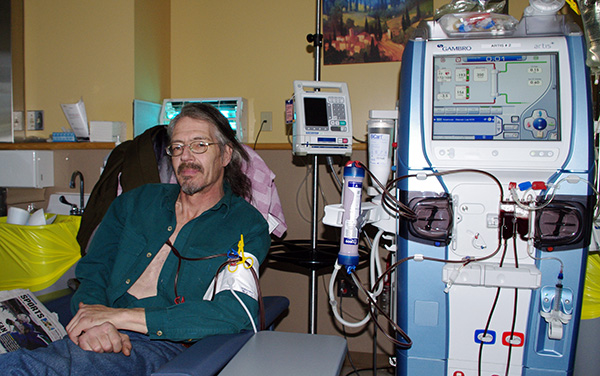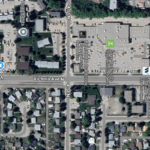Home »

Invermere dialysis “a dead horse”
The Invermere and District Hospital is now void one reverse osmosis dialysis machine despite overwhelming political opposition to the move.
“The reverse osmosis system has been removed to Sparwood,” reported Todd Mastel, Interior Health Association’s (IH) director, business support August 2 while make a presentation to the Kootenay East Regional Hospital District (KERHD) board. “The remaining equipment that was in the dialysis room will stay and be used elsewhere in the facility.”

District of Invermere Mayor and KERHD board member Gerry Taft stated, “Obviously, this is a disappointment. This board sent a very clear, unanimous message when this issue came up,” he said, adding he wished the board would have received “more of a rationale from IHA” on how it came to the decision to remove the Invermere dialysis and an explanation why communication was so poor before and during the removal issue.
Invermere resident Kirt Sellers became front and centre at the time because he was having to drive to the Cranbrook-based East Kootenay Regional Hospital three days a week, after the dialysis was closed, to receive treatment.
The story received considerable media attention and IH was the brunt of extensive public and political scorn – but it stood by its decision and moved the dialysis to Sparwood.
“It doesn’t seem like they ever changed their minds one bit. It needs to be emphasized that Interior Health gets funding for this from BC Renal Agency and the Ministry of Health. It’s not an issue of money; it’s an issue of staffing and in this case they chose to walk away from Invermere. It’s a self-fulfilling prophecy – when you have services not open consistently, people move away, people die… people get forced into a whole new dialysis and so of course there are less patients left,” Taft said.
“Very disappointing but I guess it’s a dead horse,” he admitted.
KERHD board chair John Kettle outlined how a meeting was held with IH and how he understands things moving forward.

“We thought the roll out of the information was terrible, at the time, and they acknowledged that, frankly. But they also acknowledged it is an operational issue and it had to stay within their purview unless we want to take on operations – which we won’t. I had hoped it would turn out better but I will say this; based on the fact it is closed because of one person – and that person is now coming back and forth to Cranbrook – then I want IH to know that as a board, because we have eight of these (dialysis units in the KERHD), that we will take that as the floor on closures. A closure – from my standpoint in the future – will be one (person needing dialysis at a given unit),” Kettle said.
Village of Canal Flats Mayor and KERHD board member Ute Juras said IH is doing no favours to local government and community leaders.
“We are working so hard these days to try to have people stay in our valley – and if we take away important services like this it makes it harder for us,” she said, noting she understands it is “a provincial issue. But it is a broader issue than that.”
Juras explained that while only one person needs the service in Invermere at this time, the Columbia Valley remains a thriving tourism centre and it is not uncommon for visitors to seek dialysis services. The loss of that service will impact tourism, she said, adding she would like IH to explain what will happen if more fulltime residents become needful of dialysis services?
Chair Kettle said she was speaking to his earlier point and, addressing Mastel and the IH delegation, asked, “Since you’ve heard that in my opinion, based on the closure, that the level was one – then that means if it goes to two, then it should be reopened. So IH needs to speak to this,” he said, asking Mastel to pass along that “we’ll live with the floor – one – but if it gets to two, we expect the service restored.”
While not his bailiwick, Mastel told the board, “I can say we look at our services on a regular and ongoing basis and if the volume of patients in the Columbia Valley needing the service increases, we will evaluate it at that time.”
City of Fernie Mayor and KERHD board member Mary Giuliano said the removal of the dialysis “saddens me to see the dialysis in Invermere closed.” She shared how she became engaged in having the first dialysis unit brought to Sparwood after meeting a gentleman in Calgary, where her daughter was receiving dialysis, who helped have a machine placed in Invermere – for his wife.
“I think Interior Health should look at the people as human beings – and think of them as persons before they make decisions, because I don’t think their decisions are ever based on the people being human beings, but just based upon facts and figures.”
While noting he doesn’t believe IH operates so coldly, “the reality for all of us is, it’s numbers,” Kettle said.
Taft concluded by pointing out that before dialysis service was interrupted in Invermere, with the lone trained staff member taking a leave of absence, “There was more than one person” utilizing the service.
Above photo: Kirt Sellers undergoing dialysis at the East Kootenay Regional Hospital. It looks as though the Invermere resident will have to continue making the trip to Cranbrook three times a week for treatment.
Ian Cobb/e-KNOW







